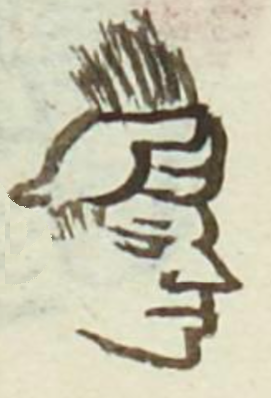Tlamani (MH618v)
This black-line drawing of the simplex glyph for the personal name Tlamani ("One Who Captures Another in War") is attested here as a man's name. It shows a profile view of a man's head, looking toward the viewer's right. The hand of an unknown person is pulling the man's hair upward.
Stephanie Wood
The pulling or cutting of someone's hair was a grave insult and brought dishonor. Hair pulling was also an attack strategy. [See Sonya Lipsett-Rivera, Gender and the Negotiation of Daily Life in Mexico, 1750-1856, 2012, 245.] Perhaps the captive in this glyph was about to be sacrificed, as the hair of some slaves was pulled out before they were sacrificed.
Stephanie Wood
1560
Jeff Haskett-Wood
captura, tirar de cabello, agarrar del pelo, nombres de hombres

tlamani, one who captures another in war, https://nahuatl.wired-humanities.org/content/tlamani
Él Que Captura Otros en Guerra
Stephanie Wood
Matrícula de Huexotzinco, folio 618v, World Digital Library, https://www.loc.gov/resource/gdcwdl.wdl_15282/?sp=319&st=image.
This manuscript is hosted by the Library of Congress and the World Digital Library; used here with the Creative Commons, “Attribution-NonCommercial-ShareAlike 3.0 License” (CC-BY-NC-SAq 3.0).




